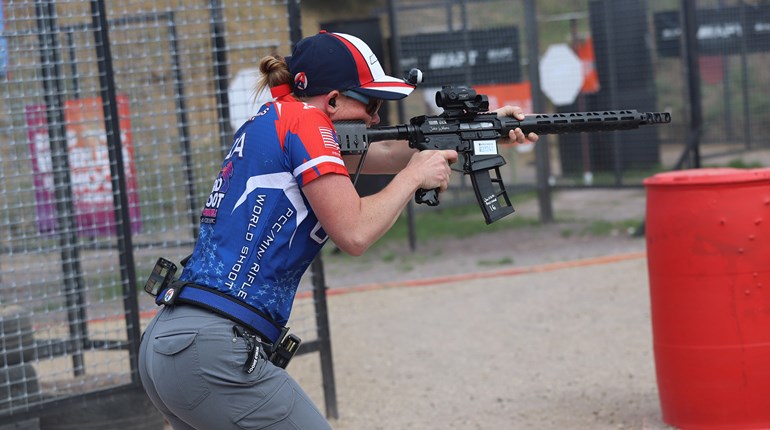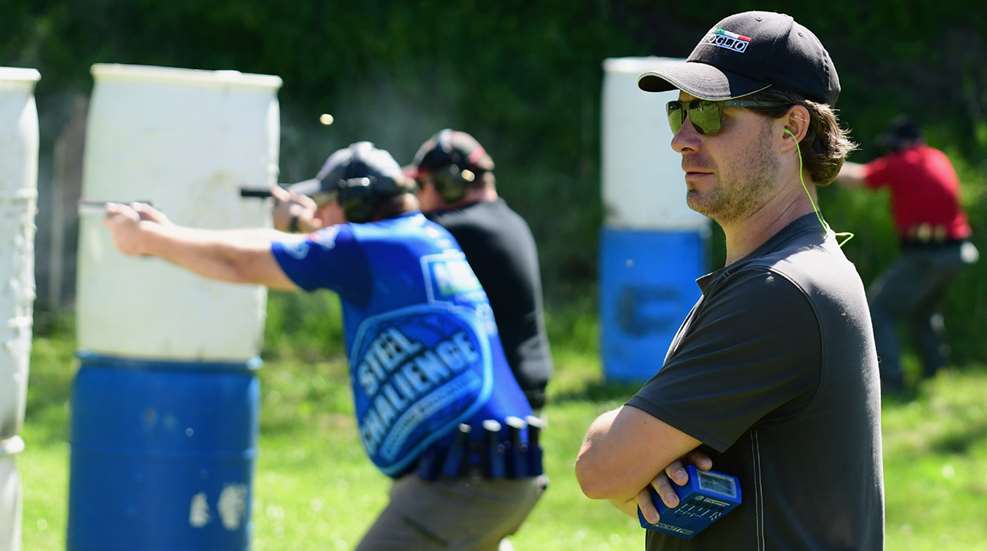
Starting at a young age, I could be found playing with toy guns, and you could often find me tagging along with my dad and uncle to the gun range. Beginning with .22 LR and .38 Spl. revolvers, I moved up to .45 1911s before I had a driver’s license. Then sports, school, girlfriends and jobs happened, leading to careers, homes and family obligations that would keep me from spending much time shooting. It wasn’t until I was 27 years old that I shot my first competitive shooting match. Before that I had purchased a few handguns, had my carry permit and would shoot at the local indoor range when time allowed. However, after that first match I was hooked, and 20 years later I am still at it.
Over the last two decades, I have managed to move from C Class to Master and have hung some wood on the wall along the way. I have taken a few classes from championship-level shooters, learned a few things and been able to hold my own here and there, but I’ve never really spent much time on fixing what is broken, having a dry fire routine or even really knowing what to practice on to get better. I have always gone with, “I do what I do okay enough, the effort to get better probably isn’t worth it,” which translates to, “I am okay with inconsistent mediocrity.”
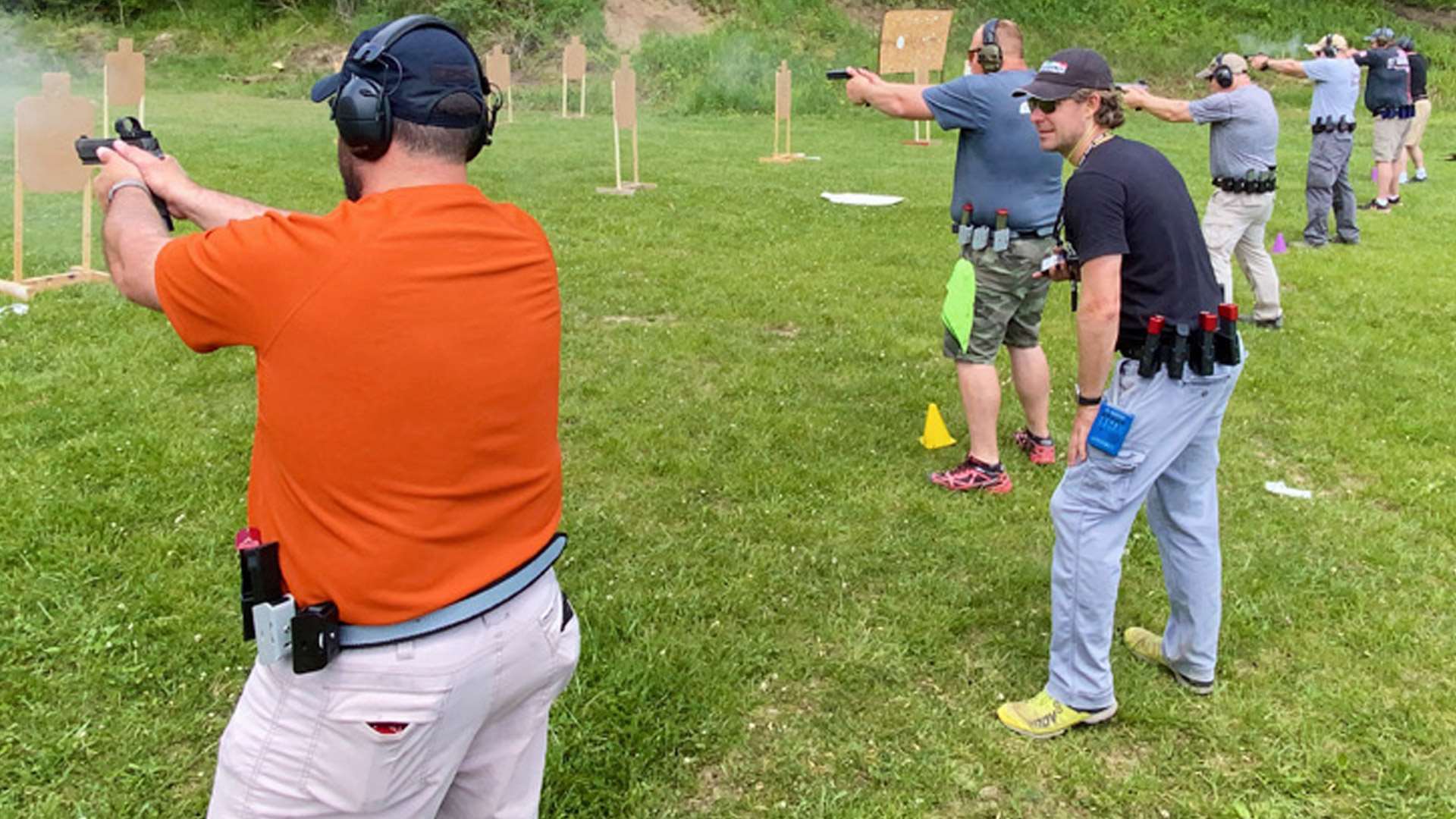
In 2005, Ben Stoeger discovered practical shooting, and since then he has racked up eight Production Division National Championships, an IPSC World Shoot Championship and nearly won Limited Division last year. At the same time, he has published 10 books and several videos, as well as traveled the world, competing and training. As he explains in his class, “It is my job to make people better shooters.” Many of those books are “reloaded” versions of the original release, as he has found better ways to accomplish his goal of staying on top of the competition shooting world, as well as how to help others learn from what the knowledge he has picked up.
I attend Stoeger’s Practical Shooting Fundamentals class this past June at the Wildcat Valley Rifle & Pistol Club in Lafayette, Ind., with several other local competitors I shoot with. The Practical Shooting Fundamentals class is Stoeger’s two-day competition training class, and the goal of this class is for students to leave with an idea of how to dry fire and live fire practice more efficiently, as well as how to improve on the foundation of skills taught to get better at competition shooting. Our class had Grand Masters and Master-class competitors, as well as 3-gunners and people who primarily shoot IDPA. It was a good mix of shooters with varying experience and skill levels, but all wanting to learn how to get better.
Since this is a class designed to make you a better competition shooter, we started out shooting a typical USPSA field course that Stoeger had set up the first morning of the class. Similar to showing up to your local club match, you shoot the stage cold, and that is what we did. Once everyone was through the stage, we were gathered together in the next bay, and Stoeger laid out the training that we would be working on over the next several hours. We started with good old-fashioned accuracy drills, and this gave Stoeger another opportunity to watch each shooter, to review their grip and stance as we shot some different drills. One of the things that he mentioned is that no one likes accuracy drills—they are not fun—but if he shoots 40,000 rounds a year, 20,000 to 25,000 of them are on drills like these. So if we are taking notes on things that are important, being able to shoot accurately is one of them. To be clear, this wasn’t group shooting at 25 yards, this was shooting at groups of targets at various distances accurately, or in other words—A-zone hits on targets.
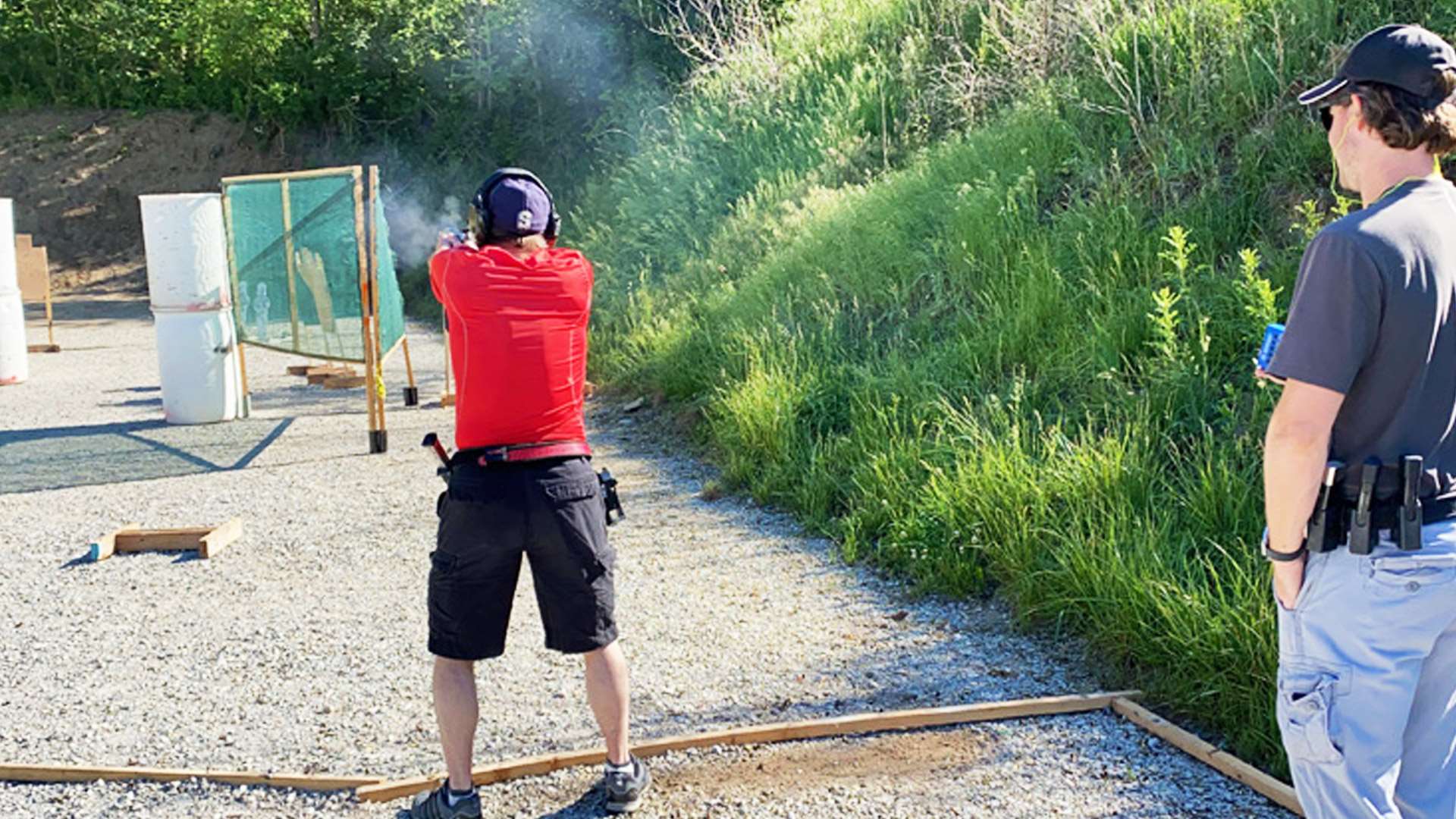
The difference in group shooting and what we were doing was figuring out what we needed to see on the sights, whether they were iron sights or a red dot, at different distances to get accurate A-zone hits. Group shooting is just that, trying to shoot a tight group on a single target at a single distance—which you still need to be able to do—but that was not the object of these drills. As we progressed through the drills, Stoeger would discuss grip, finger placement and sights. He spent time with each of us, observing and then pointing out what was good or what was an area of focus. We discussed recoil and letting the gun recoil, versus getting tense and fighting it. Stoeger would demonstrate how these things should look, being relaxed while still having a tight grip on the gun, being able to manipulate the trigger and crushing the grip with your support hand and how tension in your shoulders and arms causes you to push shots out of where you are aiming. This became very clear as we accelerated the pace of our shooting on the targets. Drawing into a target our first couple of shots were good, but as we accelerated our pace and splits, arm tension, shoulder tension and dropping the head down would cause shots four, five and six to widen up, and many times to start having C and D hits. Stoeger would watch us shoot and would point out what was causing this, and what we needed to do to correct it.
Next, Stoeger demonstrated how sight focus and target focus worked, but also how that played into speeding up your shots and transitions. Taking what we learned from the first drills, we would apply it in this next set of drills, drawing into a close target to get two good hits fast and transitioning to longer shots, target focus to sight focus and vice versa. We would work on these drills with different target setups for the remainder of the day. There were some with steel, some with tight no-shoots, near to far targets—everything regularly seen at matche stages.
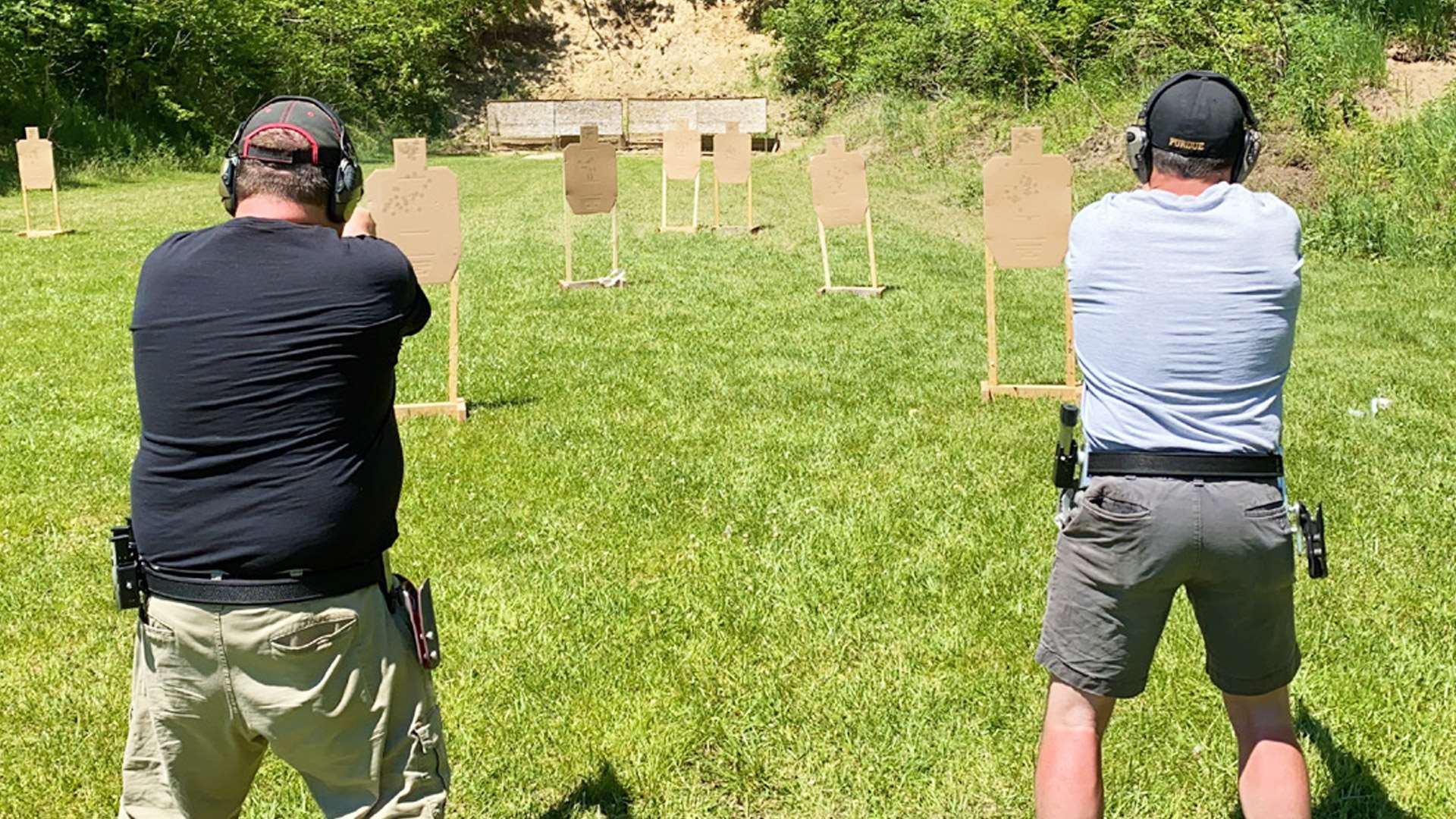
Stoeger would spend time with each student as we worked through the drills, after his demonstration of what it should look like and what it shouldn’t. He would answer questions before we started and ensured that we understood the goal of each drill. The most informative part of the course was him picking apart what you were doing right, what was wrong, the cause of it and how to correct it. Stoeger would emphasize the importance of working through a drill in dry fire, and what you need to be focused on when doing it before doing it in live fire. So we ran each drill in dry fire before we started shooting it. We would repeat this process throughout the day, each time building on the skills that we had learned from the previous drill. In some cases it was easy to fall back into old habits, and the results could be seen on the targets.
Day 1 wrapped up with a discussion of what we learned and how to continue to apply it in dry fire and live fire. There was also discussion around how Stoeger has worked on developing his training for himself, what he works on and how this has continued to progress in his training of students. These are all drills that he has worked on to achieve the success that he has in shooting competition.
Day 2 began with running the USPSA stage again cold. There had been some changes made to it, since this part of the training was going to focus on movement and shooting. Again, everyone worked through the stage applying the shooting skills learned the previous day while Stoeger observed. After the stage was complete, we started on the next group of drills and pulled together shooting skills from the first day with the addition of movement. Different target arrays were set up to work on with the addition of barrels to move around on the target engagements. There were steel targets mixed in with paper, some with no-shoots, again near to far or vice versa on the engagements. We worked through these drills and discussed what you needed to see coming into a target, what was acceptable to make good hits, going from target focus to sight focus, and how to move into and out of positions.
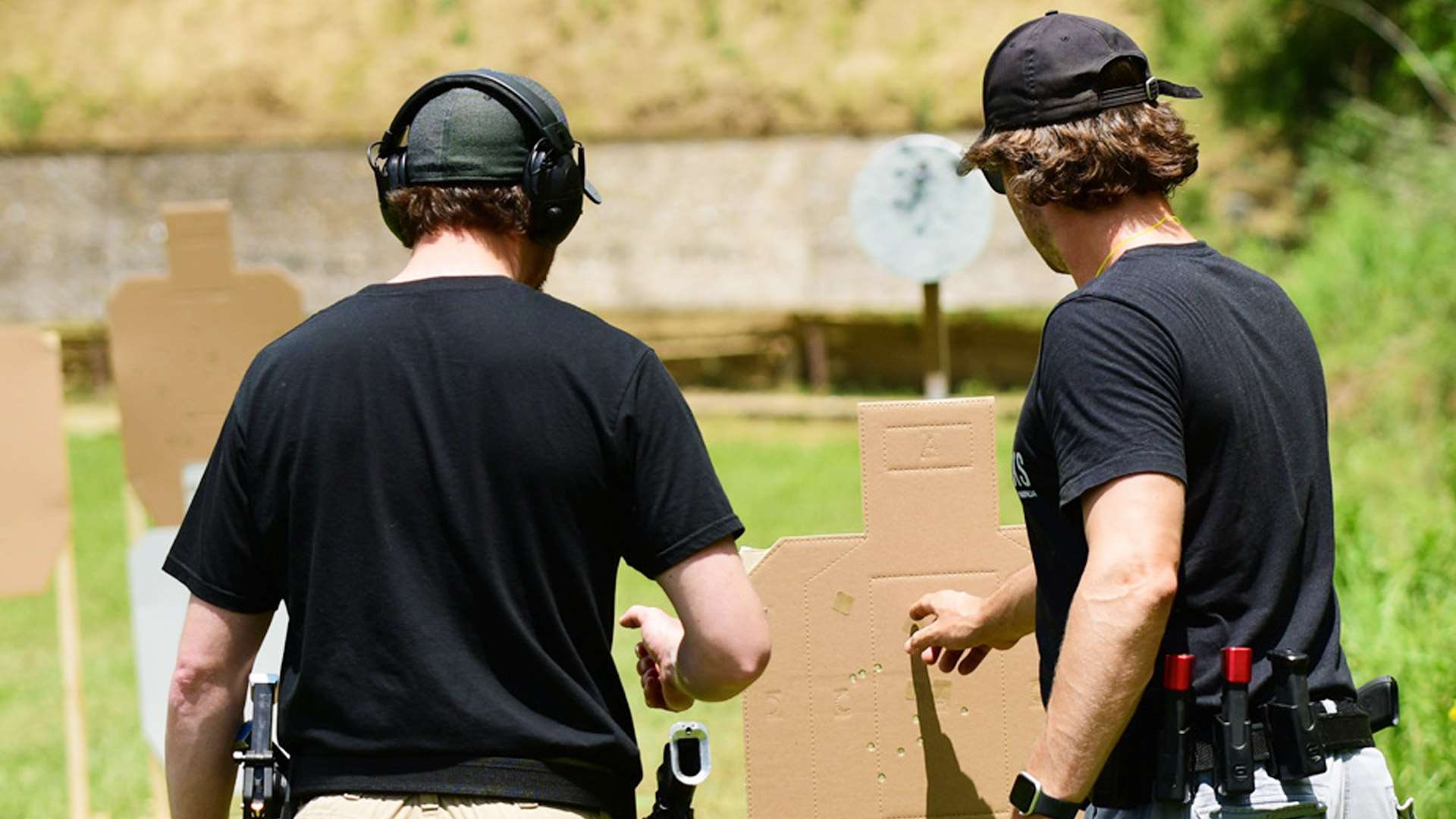
Day 1 was spent on shooting skills, while the focus of Day 2 was the importance of movement and maintaining the skills learned the previous day. Stoeger spent a considerable amount of time demonstrating these movements, plus working with each student on what they were lacking to make their movements more efficient. As part of working with each student, he would again pick apart what you were doing right, but more importantly what you were doing wrong and how that was not only affecting your time on a stage but your shooting as well, where to stay low, how to stay balanced, how to avoid unnecessary leans, and how to position your body to get the most out of your shooting and movement. We would work through each drill in dry fire before live fire, again bringing home that you can work out a lot of things in dry fire before hitting the range for live fire.
After two days of skills, drills, fundamentals and coaching, the final test, so to speak, was to see how much better we shot the stage that we started with cold on Day 2. Everyone had improved, shaving off time and getting better hits. I managed to shave off almost two seconds of time by focusing on my movement with better hits. As the second day winded down, Stoeger again emphasized that he was there to show us how to break those old habits that were holding us back. He made the point several times that this was a foundation for us to build on and to continue to work on the areas identified in dry fire. There was a tremendous number of things discussed, why we did certain drills and how to make them effective in our training. Stoeger, knowing that it was a lot to retain, provided each student with a copy of Breakthrough Marksmanship, his book on the tools of practical shooting.
After 20 years of shooting, there were several lightbulb moments for me during the class. If you have been like me, just continuing to do what you do, but seriously want to fix a few things and get better, I recommend attending one of Ben Stoeger’s classes. There is a reason why he has continued to dominate and has trained many competitors that have moved up in class and improved their match performance—it is his job, and he takes it very seriously.
Article from the September/October 2020 issue of USPSA’s FrontSight magazine.
See more: Review: CO CZ Shadow 2













